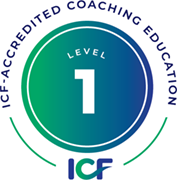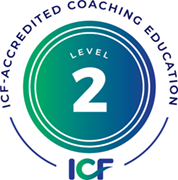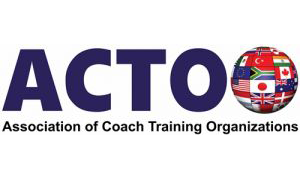Presence-Based Coaching is built around the key deliverables of radically new lifelong competencies for the leader.
Defining these outcomes strengthens the partnership between coach and client, and provides shared accountability. Bold outcomes shape the dialectic of coaching conversations and real-world application. Involving other stakeholders accelerates and focuses learning.

Coaching Outcomes
Coaching outcomes are behavioral, competency-based, observable, and designed to require new capacities. They address immediate challenges, and also prepare the leader for unforeseeable futures. Coaching develops new competencies that can serve for a lifetime.
Externally visible competencies
Some coaching outcomes focus on the “outer world” of professional competence. These guide your development in ways that are visible to others:
- presenting yourself effectively in business interactions
- determining short- and long-term career focus and direction
- engaging, involving and mentoring others
- balancing decisiveness with caring, inquiry, and engagement
- recognizing and replacing unclear, implicit communication with direct, succinct communication
- identifying and managing “hot button” reactions such as sarcasm and anger
- listening attentively and responding wisely to requests from boss, subordinates, and peers
- making strategic decisions in complex situations
Internal competencies
Other coaching outcomes build your self-mastery. These may be primarily observable only by you. At the same time, they are the foundation for long term, externally visible results.
- recognizing tension and hyper-vigilance in your body and replacing them with calm relaxation
- accessing creativity and resourcefulness in the midst of chaos and competing priorities
- recognizing your needs and translating them into direct requests
- recognizing and letting go of the impulse to “fix things” and keep everyone happy
- extending boldness when it would be easier to hold back or wait for it to be safe
- maintaining presence and poise in difficult interactions with others
- staying focused on important priorities amid the “noise” of daily work.
Coaching Mini-Cases
Each case offers a brief description, a sample coaching outcome, and examples of how developmental cross-training learning strategies [link to Our Approach page] supports the coaching outcome. Names and specifics have been changed for confidentiality, and a couple of cases are compilations of two or three actual clients.
These sketches illustrate how the integration of developmental approaches supports real and sustainable change.

Non-profit leader seeks to shift controlling style to be more collaborative
Jeff is an experienced Executive Director of a non-profit with a strong track record and visionary goals. However, his passion sometimes translated into an overbearing style that left team members out in the cold. Jeff knew he had to change his own behavior in order to build the level of teamwork that the agency’s strategy required. A team exercise had provided a wake-up call, with Jeff receiving tough feedback on how his style actually impeded progress.
Coaching Outcome (one of six)
Balance passion, inspiration and drive with listening to evoke ideas and input from others.
Sample Learning Strategies
- Awareness and Understanding: Self-observe his internal urge to interrupt others
- Body: Experiment with body language (e.g., leaning back in meetings rather than leaning forward.) Collect data on what happens
- Relationships: Practice reflecting what’s makes sense in another’s perspective
- Environment and Systems: Create and post explicit team agreements around meeting processes that encourage collaboration
Results
A follow-up 360 review six months later provided solid evidence that Jeff is listening better, his team is much more engaged, and there is better follow-through and accountability. The group is on track toward their goal.
Newly promoted CEO wants to build a culture of accountability and employee-friendliness
Ruth is the new CEO of a regional organization of a national system. This region had a history of poor performance and a fear-based culture established by her predecessor. Morale indicators were at an all time low and the organization had lost market share.
Ruth is naturally a people person, and quickly made a number of employee-friendly changes to re-establish trust. However, she soon recognized her hesitancy to communicate bold performance expectations and to hold people accountable, for fear of reinforcing the old mentality she was trying to move away from.
Coaching Outcome (one of four)
Increase effectiveness at shifting responsibility and accountability to others.
Sample Learning Strategies
- Awareness and Understanding: Self-observe her reluctance to confront performance issues and breakdowns. Reflect on specific conversations that addressed accountability, and explore what make it possible.
- Body: Practice a wide and grounded physical stance that communicated power with (rather than power over…)
- Relationships: Develop and practice talking points that convey a clear expectation of performance and accountability.
- Environment and Systems: Track daily interactions with others that address accountability. Also, make her own development goals and learning practices public, and publish her results.
Results
Ruth successfully and consistently articulates a dual focus on people and accountability. The organization has developed a new management structure to drive critical priorities, while experiencing significant breakthroughs as a direct result. This regional organization has become the top performer, among over 30, on several key metrics.
Overcommitted entrepreneur seeks better life balance
Rod is a successful consultant with a demanding travel schedule, extensive family and community obligations, and a blistering pace. Because of his “pleaser” personality, he felt overextended and out of control. He was no longer being his best in any situation.
Coaching Outcome (one of four)
Increased competency at discerning which activities bring real joy and fulfillment and declining those that don’t.
Sample Learning Strategies
- Awareness and Understanding: Inventory the range of activities in Rod’s life, and assess each activity’s actual benefits and costs. Self-observation exercise to monitor the subtle internal pulls towards saying “yes” to opportunities.
- Body: Practice recognizing the urge to say Yes when asked, and taking the time to relaxing and really assess if this is a commitment he wants to make.
- Relationships: Decline or discontinue specific commitments that are no longer satisfying, while maintaining the relationships where it’s important to do so.
- Environment and Systems: Block out sacred times on calendar for himself, and for his family time.
Results
With new awareness of what motivates him, Rod has renegotiated healthier boundaries in several areas, including changing the nature of his contractual relationship with his firm. He has eliminated a number of unfulfilling obligations, and is laying the groundwork for a deeply fulfilling and purposeful business.
New minister aspires to revitalize a traditional church without alienating traditionalists
Bethany is new, and the first female minister ever, at a mainstream suburban church in the mid-West. Bethany has been charged with increasing membership and financial health at this church. She recognizes that attracting a new generation of younger members, with very different ideas about religion, and without alienating traditionalists, will be crucial to doing this. She sees that her leadership is central to this effort.
Coaching Outcome (one of four)
Increased competency at using Sunday sermons for personal sharing and progressive metaphors, while also affirming long-standing church traditions.
Sample Learning Strategies
- Awareness and Understanding: Visually map the polarity dynamics of appealing both to progressive and traditional church members, and self-observe how she includes both groups in sermons.
- Body: Cultivate a settled, open, confident and reassuring stance in the pulpit.
- Relationships: Invite lay leaders from diverse perspectives within the congregation to help own and shape messaging from the pulpit
- Environment and Systems: Display symbols of both the traditional and the new in the sanctuary and other church gathering areas.
Results
The process is slow, but Bethany has received public endorsements from several long term pillars of the church as well as some enthusiastic younger members. Several young families have joined as regulars, and some of the older members are speaking about their own role and responsibility for being inclusive. There is a sense of coming together, and Bethany feels that she has found a home as well.
CFO wants to reduce performance anxiety and increase his enjoyment and credibility at work
Rick is the CFO in a fast-paced technology firm, and recently has experienced growing performance anxiety. By seeking to demonstrate his commitment and ability to work with others, he tended to not ask for help or take a strong stand on controversial matters. His strategic priorities were often subsumed by requests from others, and his creativity and clarity had diminished. He felt like he was losing his way, and no longer felt satisfied in what had seemed an ideal job. Trust in his leadership was decreasing, and he received feedback that he seemed to waffle on key decisions.
Coaching Outcome (one of six)
Increase competency to recognize anxiety and tentative behavior, and replace it with calm, centered self-confidence.
Sample Learning Strategies
- Awareness and Understanding: Daily scan to identify situations in which he abandons his priorities for those of others, and reflect on what drives these collapses.
- Body: Identify and practice a simple set of bodymind techniques to settle his nervous system and reduce anxiety.
- Relationships: Ask for specific feedback on his confidence and leadership presence from colleagues he trusts and respects.
- Environment and Systems: Create time windows and reminder systems to organize his key priorities before staff meetings and presentations.
Results
Rick is much more able to relax and enjoy the work that he’s doing. He has identified several reliable techniques to reduce his anxiety level in key situations. He’s more able to request support, and is more relaxed and back on track at work. He has narrowed his strategic priorities and focuses regularly and publicly on these. Others comment on their respect for his reversing what others saw as a difficult vicious cycle.








